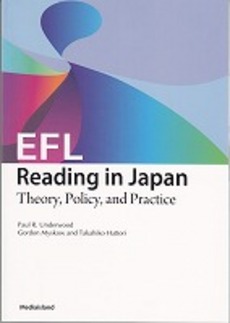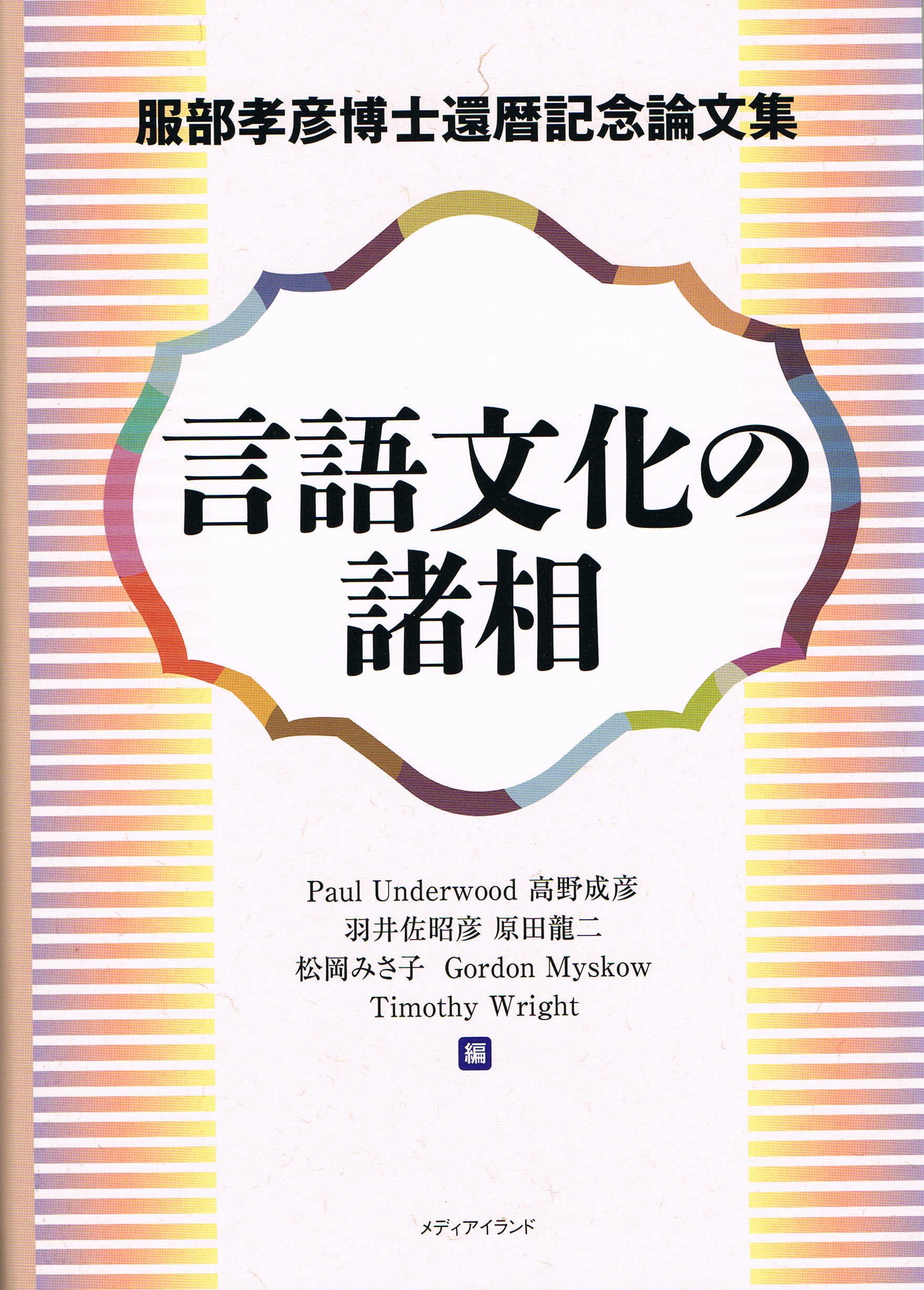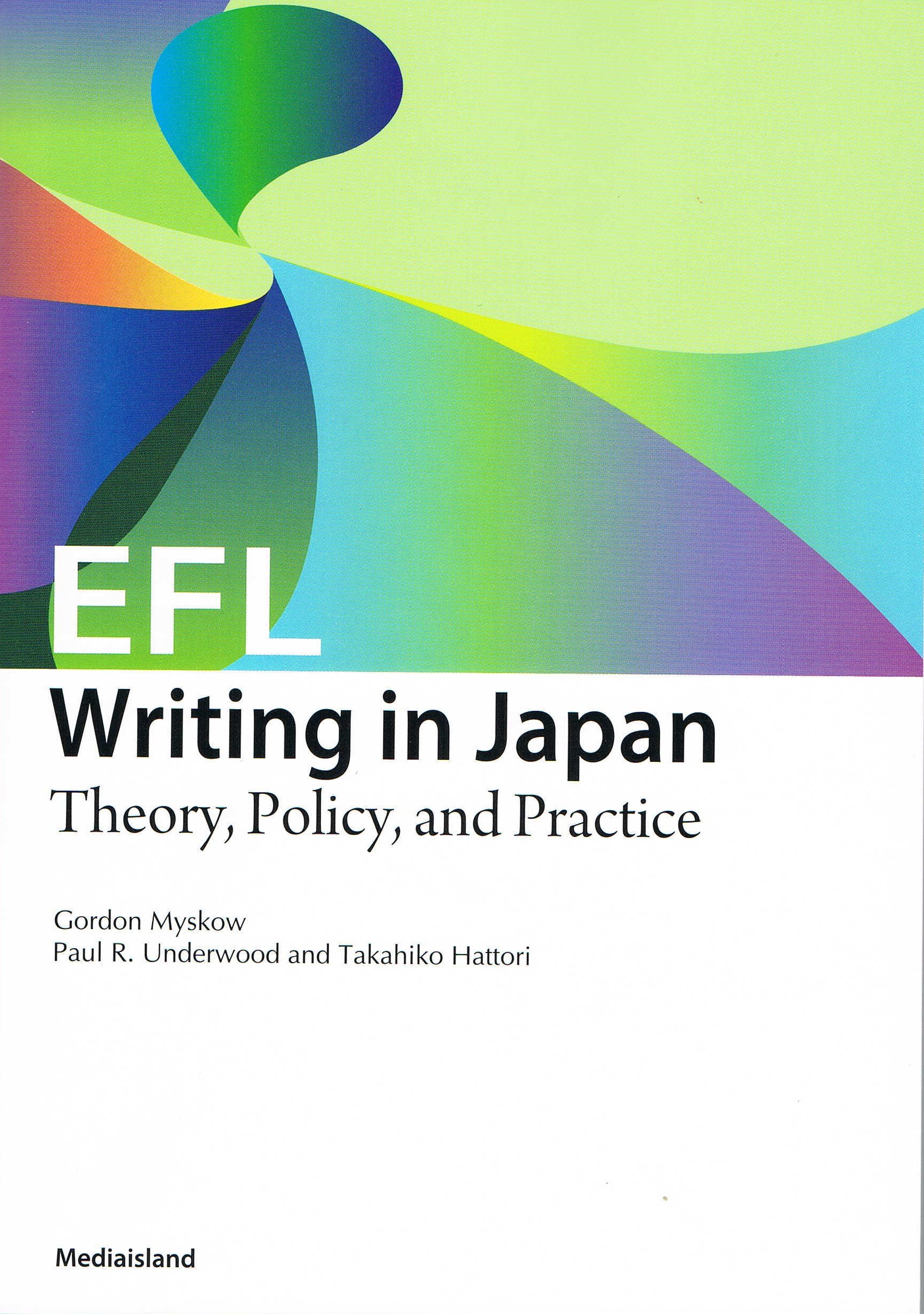HOME > 語学 > EFL Reading in Japan:Theory, Policy, and Practice
語学
-

-
EFL Reading in Japan:Theory, Policy, and Practice
- 著者Paul R. Underwood,Gordon Myskow ,服部孝彦
- 定価2,000円(本体)+税
- 初版2012年3月30日
- ISBN978-4-904678-39-8
- ページ173
内容紹介
英語教育に携わる方に、英語教授法の理論と方針、英語を教える実践方法を示した一冊です。
EFLとは、「English as Foreign Language」の略。
目次(コンテンツ)
Acknowledgements
List of Tables
List of Figures
Abbreviations
Introduction
Chapter One
The Theory of Reading
Introduction
1.1 A Skills Perspective
1.2 Reading and Cognitive Ability
1.3 Key Components of the Fluent Reading Process
1.3.1 Word recognition and vocabulary knowledge
1.3.2 Grammatical knowledge
1.3.3 Discourse structure knowledge
1.3.4 Metacognitive knowledge and strategies
1.3.5 Background knowledge
Summary
Chapter Two
Reading in the Japanese Senior High School EFL Context: Part A
Introduction
2.1 The Historical Context of English Education in Japan
2.1.1 The Meiji Era: 1868-1912
2.1.2 The 20th Century
2.2 MEXT Policy: 1989 to 2003
2.2.1 The Course of Study1989
2.2.2 The Course of Study 1999
2.2.3 The Action Plan to Cultivate Japanese with English Abilities
2.3 The University Entrance Examination
2.4 Workplace and Contextual Influences
2.4.1 Classroom conditions
2.4.2 Teacher training
2.4.3 Administrative duties
2.4.4 MEXT-approved textbooks
2.4.5 Social pressure
2.4.6 Section summary
Summary
Chapter Three
Reading in the Japanese Senior High School EFL Context: Part B
Introduction
3.1 MEXT‘s New Course of Study 2009 for Senior High Schools
3.2 MEXT‘s New Course of Study 2009 and the Key Components of the Fluent Reading Process
3.2.1 Cognitive transfer and reading comprehension…59
3.2.2 Vocabulary development and reading fluency
3.2.3 Grammatical knowledge
3.2.4 Discourse structure knowledge
Summary
Chapter Four
The Potential Impact of MEXT‘s Course of Study 2009: Developing Reading Fluency in the Senior High School Classroom
Introduction
4.1 The Role of Reading Fluency in the Japanese Senior High School Context
4.2 Research Purpose and Questions
4.3 Methodology
4.4 Findings
4.5 Discussion
Summary
Chapter Five
From Theory to Practice: Instructional Components
Introduction
5.1 Structural Cooperative Learning: Application in the L2 Reading Class
5.1.1 How is a Cooperative Learning approach different from traditional group work?
5.2 Word-recognition Skills and Knowledge of Vocabulary
5.2.1 Vocabulary lists and cards
5.2.2 Creating word-in-context questions
5.2.3 Speed reading
5.2.4 Utilizing MEXT-approved textbook passages for speed reading
5.2.5 Developing word-recognition through oral fluency
5.2.6 Reviewing specific vocabulary through oral fluency
5.2.7 Extensive reading
5.3 Knowledge of Grammar
5.4 Background Knowledge and Metacognitive Strategies
5.4.1 Activating background knowledge
5.4.2 Providing background knowledge
5.5 Reading Comprehension Skills
5.5.1 Textbook comprehension questions
5.6 Knowledge of Discourse Structure
5.7 Promoting Cognitive Transfer to the L2
5.7.1 Evaluating passages
Conclusion
References
Index
List of Tables
List of Figures
Abbreviations
Introduction
Chapter One
The Theory of Reading
Introduction
1.1 A Skills Perspective
1.2 Reading and Cognitive Ability
1.3 Key Components of the Fluent Reading Process
1.3.1 Word recognition and vocabulary knowledge
1.3.2 Grammatical knowledge
1.3.3 Discourse structure knowledge
1.3.4 Metacognitive knowledge and strategies
1.3.5 Background knowledge
Summary
Chapter Two
Reading in the Japanese Senior High School EFL Context: Part A
Introduction
2.1 The Historical Context of English Education in Japan
2.1.1 The Meiji Era: 1868-1912
2.1.2 The 20th Century
2.2 MEXT Policy: 1989 to 2003
2.2.1 The Course of Study1989
2.2.2 The Course of Study 1999
2.2.3 The Action Plan to Cultivate Japanese with English Abilities
2.3 The University Entrance Examination
2.4 Workplace and Contextual Influences
2.4.1 Classroom conditions
2.4.2 Teacher training
2.4.3 Administrative duties
2.4.4 MEXT-approved textbooks
2.4.5 Social pressure
2.4.6 Section summary
Summary
Chapter Three
Reading in the Japanese Senior High School EFL Context: Part B
Introduction
3.1 MEXT‘s New Course of Study 2009 for Senior High Schools
3.2 MEXT‘s New Course of Study 2009 and the Key Components of the Fluent Reading Process
3.2.1 Cognitive transfer and reading comprehension…59
3.2.2 Vocabulary development and reading fluency
3.2.3 Grammatical knowledge
3.2.4 Discourse structure knowledge
Summary
Chapter Four
The Potential Impact of MEXT‘s Course of Study 2009: Developing Reading Fluency in the Senior High School Classroom
Introduction
4.1 The Role of Reading Fluency in the Japanese Senior High School Context
4.2 Research Purpose and Questions
4.3 Methodology
4.4 Findings
4.5 Discussion
Summary
Chapter Five
From Theory to Practice: Instructional Components
Introduction
5.1 Structural Cooperative Learning: Application in the L2 Reading Class
5.1.1 How is a Cooperative Learning approach different from traditional group work?
5.2 Word-recognition Skills and Knowledge of Vocabulary
5.2.1 Vocabulary lists and cards
5.2.2 Creating word-in-context questions
5.2.3 Speed reading
5.2.4 Utilizing MEXT-approved textbook passages for speed reading
5.2.5 Developing word-recognition through oral fluency
5.2.6 Reviewing specific vocabulary through oral fluency
5.2.7 Extensive reading
5.3 Knowledge of Grammar
5.4 Background Knowledge and Metacognitive Strategies
5.4.1 Activating background knowledge
5.4.2 Providing background knowledge
5.5 Reading Comprehension Skills
5.5.1 Textbook comprehension questions
5.6 Knowledge of Discourse Structure
5.7 Promoting Cognitive Transfer to the L2
5.7.1 Evaluating passages
Conclusion
References
Index
その他の著書

-
言語文化の諸相 服部孝彦博士還暦記念論文集
国連英検の統括監修官として国連英検指導検討委員会及び作問委員会を統括している服部孝彦博士。服部先生が...

-
EFL Writing in Japan Theory,Policy,and Practice
英語教育に携わる方に、英語教授法の理論と方針、英語を教える実践方法を示した一冊です。 EFLとは、「...